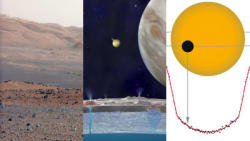Images
This class covers the fundamental principles underlying cryo-electron microscopy (cryo-EM) starting with the basic anatomy of electron microscopes, an introduction to Fourier transforms, and the principles of image formation. Building upon that foundation, the class then covers the sample preparation issues, data collection strategies, and basic image processing workflows for all 3 basic modalities of modern cryo-EM: tomography, single particle analysis, and 2-D crystallography. Philosophy: The course emphasizes concepts rather than mathematical details, taught through numerous drawings and example images. It is meant for anyone interested in the burgeoning fields of cryo-EM and 3-D EM, including cell biologists or molecular biologists without extensive training in mathematics or imaging physics and practicing electron microscopists who want to broaden their understanding of the field. The class is perfect as a primer for anyone who is about to be trained as a cryo-electron microscopist, or for anyone who needs an introduction to the field to be able to understand the literature or the talks and conversations they will hear at cryo-EM meetings. Pre-requisites: The recommended prerequisites are college-freshman-level math, physics, and biochemistry. Pace: There are 14.5 hours of lecture videos total separated into 40 individual “modules” lasting on average 20 minutes each. Each module has at the end a list of “concept check” questions you can use to test your knowledge of what was presented. As the modules are grouped into seven major subjects, one reasonable plan would be to go through one major subject each day. That would mean watching a couple hours of lecture and spending another hour or so thinking through the concept check questions each day for a week. Another reasonable plan would be to go through one module each day for a little over a month, or even three modules a week (Monday, Wednesday, and Friday) for a 3-month term. It is likely that as you then move on to actually begin using a cryo-EM or otherwise engage in the field, you will want to repeat certain modules.
Similar resources
Caltech is a world-renowned science and engineering institute that marshals some of the world's brightest minds and most innovative tools to address fundamental scientific questions and pressing societal challenges.
The Institute manages JPL for NASA, sending probes to explore the planets of our solar system and quantify changes on our home planet. Caltech also owns and operates large-scale research facilities such as the Seismological Laboratory and a global network of astronomical observatories, including the Palomar and W. M. Keck Observatories; and cofounded and comanages LIGO.
Caltech is an independent, privately supported institution with a 124-acre campus located in Pasadena, California.




